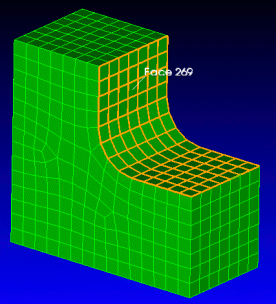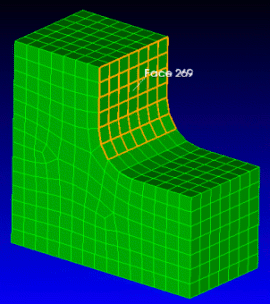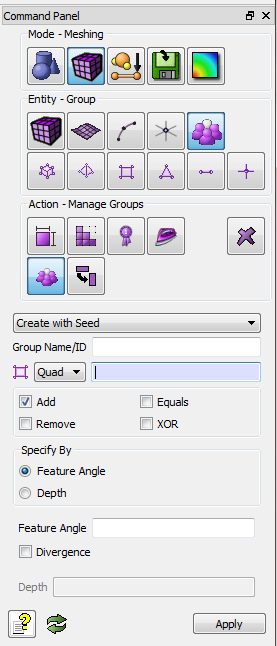
Cubit 15.9 User Documentation
It is also possible to automatically group surface mesh elements based on feature angles. Given a seed element, the algorithm will loop over all adjacent elements and create groups of elements whose surface normals are similar, or which fall within a certain radius. The command syntax is:
Group {<'name'>|<id>} {Add|Equals|Remove|Xor} Seed <mesh_entities> {Feature_angle <angle> [Divergence]|Depth <number>}
The seed element may be a quad, tri, or node element. There are two methods of angle comparison for this command. The feature angle option will compare angles of the each element to its adjacent elements by comparing surface normals. In the case of nodes, the seed node surface normal will be the average of the adjacent faces or tris. Nodes will be added if their attached faces meet the angle requirements. The divergence option will compare angles to the original seed element's surface normal. The depth option will add elements within a certain radius.
The following figures illustrate the use of the seed method to create mesh groups using the feature angle and divergence methods.

CUBIT> group 'mygroup1' add seed face 269 feature_angle 45

CUBIT> group 'mygroup2' add seed face 269 feature_angle 45 divergence
The seed method of creating groups is particularly useful for creating groups on free meshes for the purpose of assigning nodesets and sidesets.
The GUI command panel for this command is found by selecting
"Mode-Meshing", "Entity-Group", "Action-Manage Groups", then "Create with Seed." The command panel is shown below:
